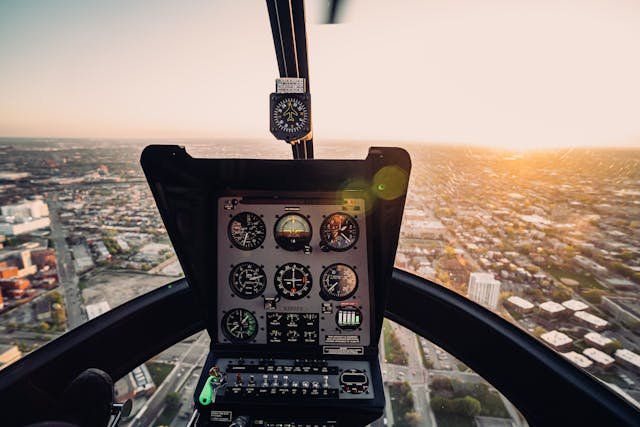Avionics systems play a critical role in the safety and functionality of aircraft. To make sure that these systems satisfy industry standards, strict testing guidelines must be followed. An extensive overview of avionics testing will be given in this article, with a particular emphasis on conformity with AS6171, an essential framework for aviation quality assurance.
Table of Contents
Understanding AS6171 Compliance
Navigating the intricacies of avionics testing in the aerospace industry requires an understanding of AS6171 compliance. AS6171, which was created by the Society of Automotive Engineers (SAE), is a set of extensive guidelines that guarantee the dependability and quality of electronic parts used in aerospace systems. Compliance entails adhering strictly to particular technical specifications while handling a variety of factors, such as reliability assessments and environmental testing. For producers and other industry participants, these standards are essential because they guide how to make electronic components that can survive a variety of environmental factors, pass stringent reliability tests, and meet exact technical requirements. The aerospace industry wants to fulfill or go beyond strict safety and quality standards by improving the overall robustness and dependability of avionics systems through the adoption of AS6171 compliance.
Environmental Testing Protocols
Environmental testing protocols are a crucial aspect of AS6171 compliance, specifically designed to assess the performance and durability of avionics components under the diverse conditions encountered during flight. As mandated by the AS6171 criteria, these protocols involve comprehensive testing to evaluate how electronic components withstand varying environmental factors. This includes subjecting the components to temperature variations, humidity fluctuations, and vibrations representative of real-world flight conditions. The rigorous nature of environmental testing ensures that avionics systems meet the stringent requirements set by the Society of Automotive Engineers (SAE), contributing to the overall reliability and safety of aerospace applications. By adhering to these protocols, manufacturers and industry stakeholders aim to produce electronic components that can operate effectively and maintain their integrity across a spectrum of challenging environmental scenarios, thus aligning with the high standards of AS6171 compliance in the aerospace industry.
Reliability Testing Procedures
Procedures for reliability testing are an essential component of AS6171 compliance and are crucial in guaranteeing the robustness and dependability of avionics systems throughout the extended operation. Reliability testing, which is required by AS6171 standards, entails a comprehensive assessment of the lifespan, durability, and general performance of electronic components. The goal of this thorough evaluation is to find any flaws or vulnerabilities that can jeopardize the dependability of avionics systems in practical uses. Manufacturers and major industry participants adhere to the strict guidelines set forth by the Society of Automotive Engineers (SAE). These guidelines include stress testing and simulated operational conditions for components. Reliability test findings are crucial to the certification process because they guarantee the continuous and efficient operation of avionic systems over long periods, improving the overall safety and reliability of aeronautical applications.
Technical Specification Adherence
Adhering to specific technical specifications is a fundamental requirement for AS6171 compliance, as outlined in the standards governing avionics testing. These technical specifications encompass precise details regarding components like connectors, cables, and various electronic elements used in aerospace systems. Compliance with these specifications is crucial for manufacturers and industry stakeholders, as it ensures uniformity and compatibility within the aviation industry. By following the exact parameters specified by AS6171, organizations can guarantee that the electronic components meet the rigorous standards set by the Society of Automotive Engineers (SAE). This commitment to adherence not only fosters consistency in avionics testing processes but also contributes to the creation of standardized, reliable components, promoting interoperability and reliability within the aerospace sector.
Documentation and Traceability
Thorough recording of all testing procedures and results is necessary for AS6171 compliance, as are meticulous documentation and traceability. As required by the avionics testing requirements, this documentation acts as an all-inclusive record, facilitating traceability and guaranteeing responsibility and transparency throughout the testing process. Following AS6171 requirements necessitates recording every stage of the testing process, from preliminary evaluations to the end outcomes. This thorough record-keeping creates a strong framework for recognizing and resolving problems or inconsistencies that may occur during or after testing, in addition to making it easier to comply with the strict standards established by the Society of Automotive Engineers (SAE). In the end, traceability and documentation are essential for maintaining the integrity of avionics testing procedures and enhancing the dependability and security of aircraft systems.
Conclusion
Maintaining the highest levels of quality and safety in aviation requires navigating avionics testing with an emphasis on AS6171 compliance. Understanding and implementing the described processes can enhance the overall performance and reliability of avionic systems.










